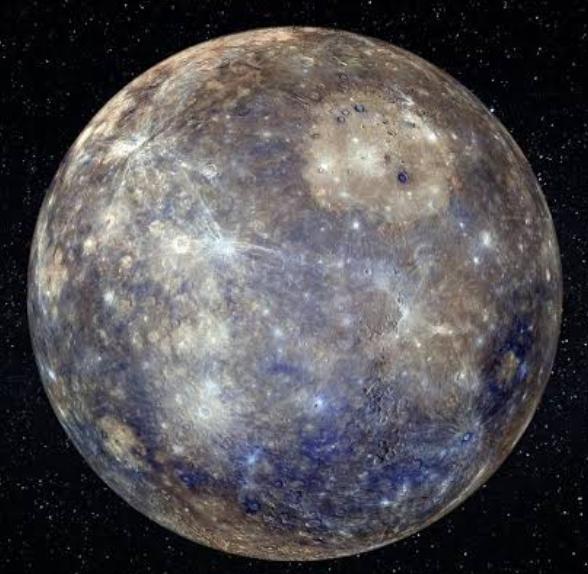Mercury is the smallest planet in our solar system and the closest planet to the sun. It has a dark gray, rocky surface, and is covered with a thick layer of dust.
Features
Size: Mercury is slightly larger than Earth's Moon.
Orbit: Mercury's orbit around the sun takes 88 days.
Surface: Mercury's surface is rough and cratered.
Atmosphere: Mercury has a thin exosphere made up of oxygen, sodium, hydrogen, helium, and potassium.
Moons: Mercury has no moons.
Temperature: Surface temperatures on Mercury can exceed 800 °F (430 °C) at its hot poles. During its long nights, surface temperatures drop to about −300 °F (−180 °C).
Observation
Mercury appears as a morning or evening star from Earth.
It is very hard to see because of its proximity to the sun.
It can be observed at least twice a year: in spring at dusk and in autumn before dawn.
Other facts
Mercury is a terrestrial planet, meaning that it has a solid surface and is mainly made of silicate rocks or metals.
Mercury is the most heavily cratered object in the solar system.

